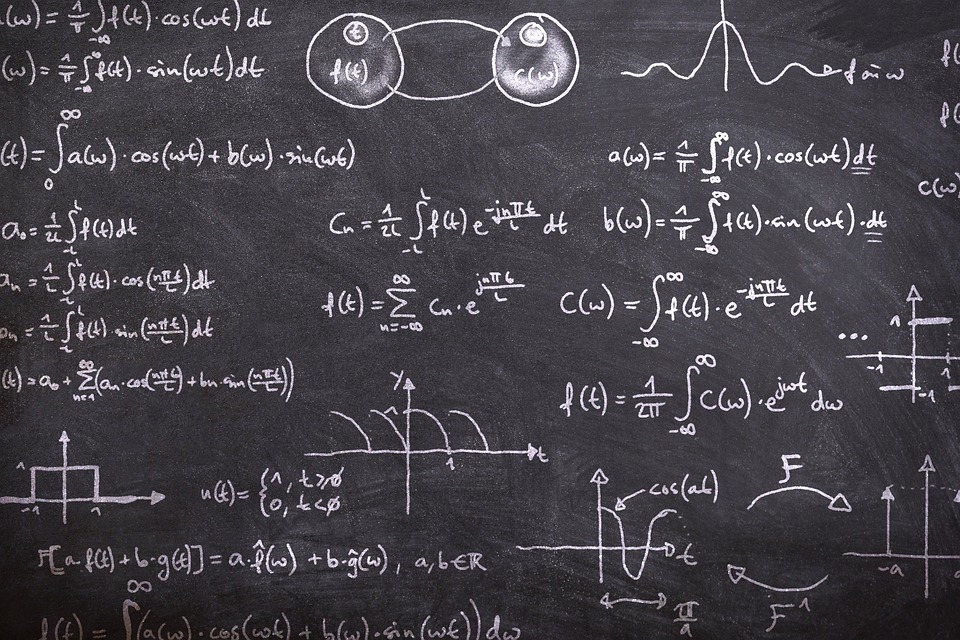The Language of the Universe: How Mathematical Formulas Shape Science
Mathematics is often regarded as the universal language through which the principles of the universe are articulated and understood. This article explores the profound relationship between mathematics and science, emphasizing how mathematical formulas serve as the foundation for numerous scientific theories, discoveries, and advancements.
I. The Origins of Mathematics in Science
A. Ancient Cultures and the Birth of Mathematical Thought
The interaction between mathematics and science dates back to ancient civilizations. The Babylonians, Egyptians, and Greeks laid the groundwork for mathematical concepts that would later become pivotal in scientific explorations. The ancient Greeks, particularly, highlighted this synthesis through their philosophical inquiries into nature and mathematics.
B. Euclidean Geometry and Physics
Euclid’s Elements introduced systematic logic and proofs, forming the backbone of geometry. The foundational work in geometry not only influenced mathematicians but also shaped the way scientists understood physical space. Pythagoras’s theorem, for instance, has applications in various scientific fields, including physics and architecture.
II. The Role of Mathematical Formulas in Scientific Theories
A. Newton’s Laws of Motion
Isaac Newton’s formulation of the laws of motion can be encapsulated in mathematical equations. His second law, ( F = ma ) (force equals mass times acceleration), provides a concise and powerful means to describe the dynamics of objects. This mathematical formulation bridges the gap between abstract thought and empirical observation, allowing scientists to predict motion under various conditions.
B. The Equation of General Relativity
Einstein’s general theory of relativity is encapsulated in the equation ( R{\mu\nu} – \frac{1}{2}g{\mu\nu}R + g{\mu\nu}\Lambda = \frac{8\pi G}{c^4}T{\mu\nu} ). This equation demonstrates how matter and energy influence the curvature of spacetime, fundamentally changing our understanding of gravity. The beauty of this formula lies in its elegance and the depth of its implications regarding the universe’s structure.
C. The Standard Model of Particle Physics
The Standard Model of particle physics illustrates the relationship between particle interactions and mathematical structures. Formulas such as the Dirac equation for relativistic electrons and Yang-Mills theory for gauge invariance reveal how particles like electrons and photons interact. These formulas serve as pillars for understanding fundamental forces, showcasing the unifying nature of mathematics in describing diverse physical phenomena.
III. Mathematical Models and Simulations in Science
A. The Importance of Models
Mathematical models serve as simplified representations of complex systems, enabling scientists to predict behaviors and test hypotheses. Examples include climate models, epidemiological models, and economic forecasts. Each model relies on mathematical constructs to simulate real-world phenomena.
B. The Role of Calculus in Modern Science
Calculus, developed independently by Newton and Leibniz, plays a crucial role in science. It allows scientists to understand change and motion, providing tools for modeling dynamic systems. Differential equations, which arise from calculus, describe everything from population dynamics to electrical circuits, illustrating the fundamental interconnectedness of mathematics and science.
IV. Data Analysis and Interpretation
A. Statistics as a Scientific Tool
Statistics is the mathematical discipline used to analyze and interpret data. In scientific research, statistical methods are invaluable for drawing conclusions from experimental data. Techniques such as hypothesis testing, regression analysis, and confidence intervals enhance the reliability of scientific findings.
B. Machine Learning and Big Data
Modern scientific research increasingly relies on big data and machine learning, both of which are underpinned by sophisticated mathematical algorithms. These methods enable scientists to extract meaningful patterns and insights from vast datasets, reshaping fields such as genomics, climate science, and artificial intelligence.
V. The Philosophical Implications of Mathematical Formulas
A. Realism vs. Anti-realism in Mathematics
The relationship between mathematics and the natural world raises philosophical questions regarding realism and anti-realism. Realists posit that mathematical entities exist independently of human thought, while anti-realists argue that mathematics is merely a useful language for describing the world. This discourse invites reflection on the metaphysical implications of mathematical formulations.
B. The Aesthetic Appeal of Mathematics
Many scientists and mathematicians assert that mathematical beauty plays a role in the development of scientific theories. Elegant formulas often lead to deeper insights. For instance, the simplicity of Einstein’s equation ( E = mc^2 ) encapsulates a profound principle that has far-reaching implications in physics.
VI. The Future of Mathematics in Science
A. Ongoing Developments in Mathematical Physics
As science progresses, the interplay between mathematics and experimental discoveries continues to evolve. New mathematical frameworks, such as string theory and quantum mechanics, challenge existing paradigms and hint at deeper layers of reality yet to be understood.
B. The Role of Interdisciplinary Research
The growing importance of interdisciplinary research underscores the necessity of mathematics across scientific domains. Biology, chemistry, environmental science, and even social sciences increasingly rely on mathematical modeling to advance understanding and inform policy.
VII. Conclusion
The synergy between mathematics and science allows us to decipher the language of the universe. Mathematical formulas are not mere abstractions; they are vital tools that empower scientists to explore, model, and understand the world around us. As we continue to unravel the mysteries of the cosmos, it is the language of mathematics that will guide our journey into the unknown.
In conclusion, the language of the universe is inherently mathematical, illustrating how intertwined these two domains are. From ancient civilizations to modern scientific explorations, mathematics remains the bedrock upon which our understanding of the universe is built. As we stand on the brink of new discoveries, the future promises even more profound revelations that will further illuminate the mathematical tapestry of our reality.


























Add Comment